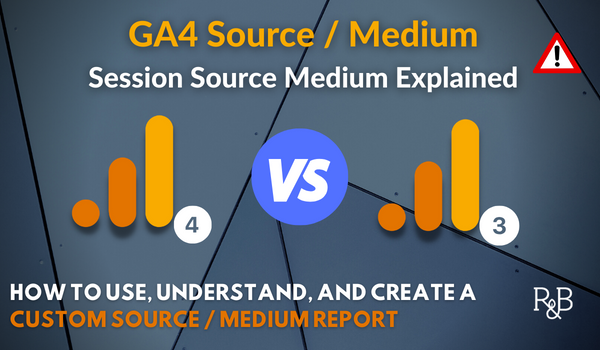Comprehensive Check Out Secondary Dimensions in Google Analytics: Definition and Ideal Practices
Wiki Article
Unveiling the Impact of Additional Measurement in Google Analytics on Information Analysis and Insights
In the world of data analytics, the utilization of additional dimensions within Google Analytics has actually become a critical device for drawing out much deeper insights and unraveling facility patterns that may otherwise stay covered. By peeling back the layers of key data collections, secondary measurements offer a nuanced viewpoint that enriches the understanding of user habits, site efficiency, and the effectiveness of marketing strategies. Nonetheless, the real influence and untapped capacity of secondary dimensions are frequently undervalued, overshadowed by the appeal of main metrics. As we navigate with the detailed landscape of data analysis, the relevance of secondary dimensions comes to be significantly apparent, dropping light on critical details that hold the key to notified decision-making and calculated optimizations.Exploring the Concept of Additional Dimensions
Secondary measurements in Google Analytics supply additional insights by allowing customers to assess primary information in combination with a second quality. By including secondary dimensions, individuals can dig much deeper into the information and discover beneficial correlations that might or else go undetected - what is a secondary dimension in google analytics.Comprehending the principle of additional dimensions is crucial for making best use of the capacity of Google Analytics. It permits individuals to segment information successfully, determine patterns, and make notified decisions based on a much more total photo of their analytics data. By exploring the numerous secondary dimensions offered in Google Analytics, users can unlock brand-new insights and enhance their electronic marketing efforts. Essentially, secondary dimensions act as an effective device for improving data analysis and driving workable results.
Enhancing Information Analysis With Additional Dimensions
Having developed the fundamental understanding of second measurements in Google Analytics and their essential function in information evaluation, the focus currently moves towards leveraging these second credit to enhance the analysis of analytics data (what is a secondary dimension in google analytics). By including second dimensions right into information analysis, analysts can acquire deeper insights into user actions, site performance, and marketing efficiency

Moreover, second measurements aid in contextualizing main information metrics by supplying additional layers of details. This contextualization aids in understanding the 'why' behind the information patterns, helping experts make informed optimizations and decisions to improve total performance. Ultimately, including second dimensions improves the information interpretation process, bring about even more tactical actions and meaningful understandings.
Uncovering Hidden Insights With Second Dimensions
Checking out the depths of analytics information with second measurements discloses beneficial insights that would otherwise remain obscured. By including secondary measurements in Google Analytics, companies can uncover hidden patterns, patterns, and correlations that offer an even more comprehensive understanding of individual actions and site efficiency. These added layers of data enable experts to delve deeper right into the key dimensions, such as website traffic sources or landing web pages, and get a much more nuanced viewpoint on just how different variables communicate with each various other.Via the use of secondary dimensions, analysts can section and compare data across various dimensions, enabling them to identify particular factors that influence individual interaction, conversion prices, and total success metrics. By combining the primary measurement of 'gadget category' with the additional dimension of 'age team,' marketers can determine which age demographics like accessing the site via mobile gadgets versus desktops.
Leveraging Secondary Measurements for Actionable Analytics
Building upon the understandings unveiled via secondary measurements in Google Analytics, services can now harness this enriched information landscape to drive actionable analytics and strategic decision-making. By leveraging second measurements, companies can dive deeper into their information to extract useful patterns, trends, and correlations that may have previously gone undetected. This much deeper level of analysis allows organizations to acquire an extra extensive understanding of customer actions, campaign efficiency, and total site efficiency.One trick advantage of using secondary dimensions for workable analytics is the capability to sector data based on specific criteria. This division enables services to customize their techniques and projects to different target market teams, leading to much more targeted and reliable marketing efforts - what is a secondary dimension in google analytics. In addition, secondary dimensions offer an even more holistic sight of user interactions, allowing services to maximize their internet site web content, design, and general customer experience
Making Best Use Of Decision-Making With Secondary Dimensions
To enhance calculated decision-making in analytics, leveraging additional measurements in Google Analytics can supply an extra nuanced viewpoint on customer actions and project performance. By incorporating secondary measurements right into data analysis, businesses can dive deeper right into the specifics of our website their web site visitors' interactions and engagement patterns. This added layer of information enables a much more detailed understanding of exactly how different variables, such as demographics, devices, or traffic sources, influence crucial performance indicators.
Conclusion
In final thought, making use of second dimensions in Google Analytics plays a crucial role in improving information analysis and revealing covert understandings. By discovering this concept, one can acquire a much deeper understanding of user actions and make educated choices based on actionable analytics. Leveraging additional measurements permits an extra detailed analysis of information and maximizes the performance of decision-making processes.
Report this wiki page